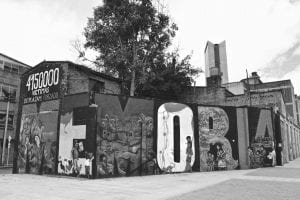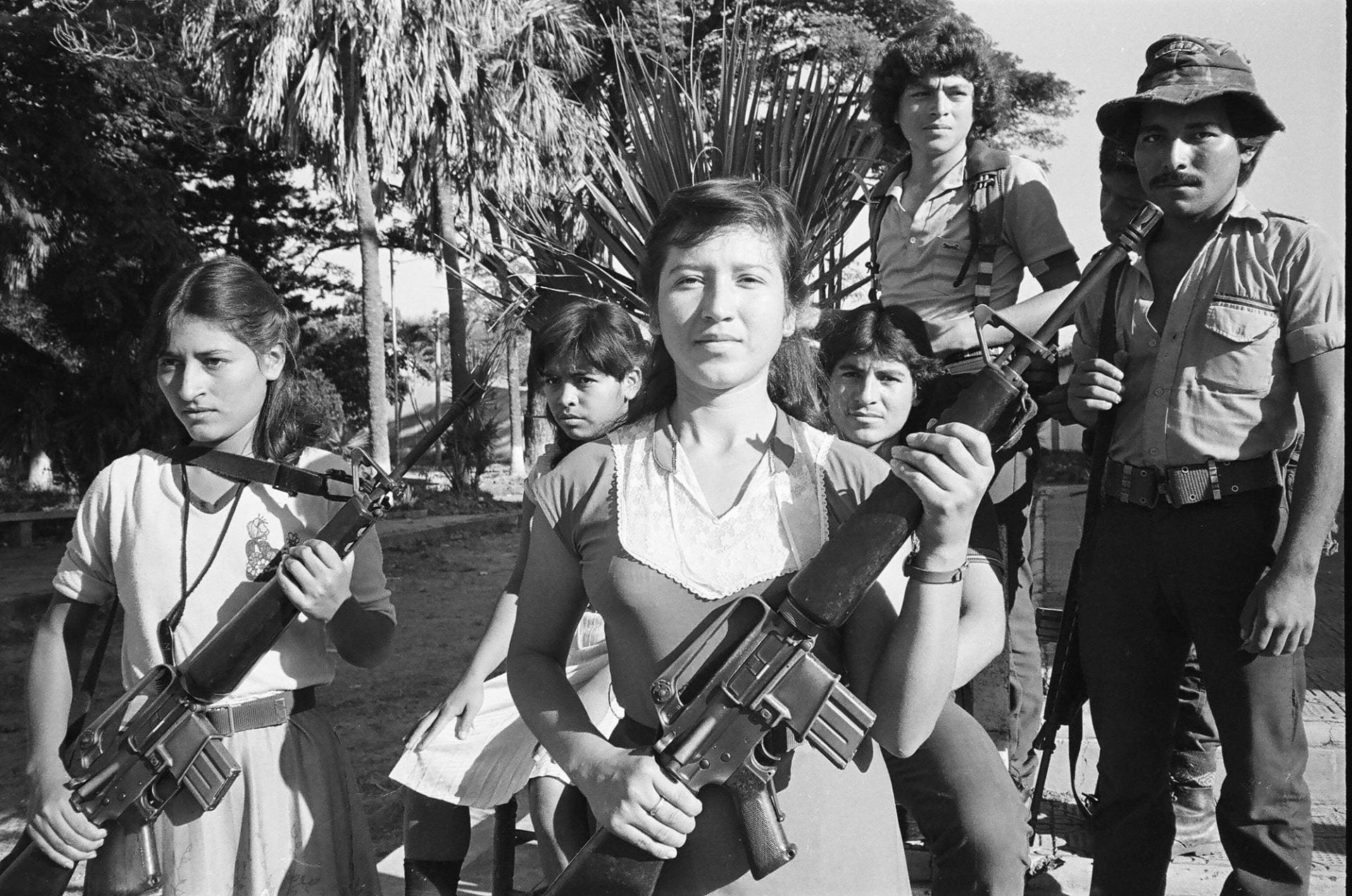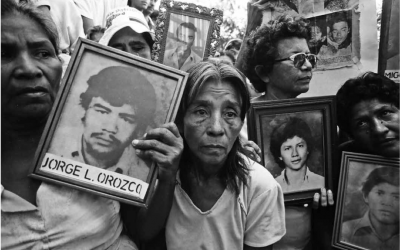Democracy, Citizenship and Commemoration in Colombia
Performance of “Plural and Exceptional Memories”

A memorial to memory and to Colombia’s thousands of victims on the Avenida El Dorado. Photo by Sylvia Percovich
Military detachments costumed in the historical uniforms of the patriotic army journeyed on foot, by mule and on horseback on a long journey promoted as the Liberty Route to celebrate Colombia’s bicentennial. The media showed the inhabitants of different towns of the country celebrating the arrival of the marchers, fulfilling their own role in this polemic recreation of the official stories about national independence. Against the backdrop of a politically polarized country deeply affected by the armed conflict, this game with fragments of history sought to associate President Álvaro Uribe Vélez’s polemical Democratic Security policy with the 1819 Campaign for Liberation.
This act was part of a 2010 program known as the Bicentennial of the Independences. This included the so-called Bicentennial Routes, which took visitors along four historic circuits—including the Liberty Route—each one associated with some military or scientific endeavor that would have given life to the Colombian nation. Colombian citizens were encouraged to pay homage to their roots and also to experience the immense cultural and geographic diversity of their national territory. “Live the Colombian history and explore the country’s geography,” said one of the campaign slogans.
But the stories included in the celebration were more than the ones found in school history textbooks. They included the different memories of Colombians especially those ordinarily excluded from official history. The state called upon Colombians to go beyond the mere celebration of the past of the nation, and to honor those multiple memories taking root throughout the land. Indeed, one of the linchpins of the bicentennial program was called Diversities of Memory. This included the creation of local centers in several towns throughout the country, designed to “recuperate, register and save the common local memory.” The local centers were led by cultural agents known as “keepers of memory.” In the same spirit, another linchpin of the bicentennial program named Pluralities of Memory presented three documentaries entitled Memorias de la Libertad. These films recreated the emancipatory struggles of Colombia’s ethnic minorities: the Ika tribe from the Sierra Nevada of Santa Marta, the Nasa group from the southwest Andean region and a collective of Afro-Colombian women from the Cauca Valley, all of whom rose up against “distinguished agents” of the nation.
Such programs promoted the notion that local and ethnic communities made up specific varieties of national memory—something similar to the national industry of “typical” artifacts. The basic idea is that memory itself is a richness, a patrimony, whose worth derives from its diverse nature—as happens with the biological, ethnic and cultural wealth. Thus, not only the state but also the citizens are considered responsible for the recuperation, recording and rescue of memories. It is clear that this patrimonial concept of memory is closely linked to the two decades-long emphasis on multiculturalism in Latin America. Indeed, in the Colombian case, multiculturalism had been elevated to a constitutional principle in 1991, obliging the state and its citizens to protect cultural and ethnic diversity conceived as part of our cultural patrimony.
From the viewpoint of the state, this nationalization of the memories of ethnic groups and local communities could be seen as a way to achieve social inclusion. In fact, the Local Centers for Memory have as their slogan “All of us are memory,” another way of saying that all of us are a nation. However, this recognition of the diverse nature of the Colombian memory creates dilemmas that limit this goal of inclusivity. The three documentaries grew out of state recognition of the plurality of independences. Nevertheless, different social struggles are included under the same umbrella (“liberation movements”), assuming that all are part of the same process. So, the contradictions between different stories are unknown—and the profound historical inequalities that they show us can be evaded. When memories are treated as an expression of diversity and not also of inequality, they are permitted to coexist unquestioned “in a lighter fashion,” each kept in its own place. Thus, it is possible to evade the tension between a history that tells us about national independence and others that assert that not all social groups were emancipated, some of which carried out their own heroic deeds, even against the project of nation that emerged from Independence.
This patrimonial concept of memory does not coverall its current meanings—the memory is being linked in many ways and by different actors to democratic practice. Today, in Colombia, it is common to talk about memory as a right and to “make memory” (“hacer memoria”) as an exercise in citizenship. Together with ethnic and local memories, the memories of the victims of social and armed conflict have come into play in the last decade, spurred on by human rights activists and transitional justice policies. An entire legal and institutional apparatus has been created to carry out these policies. In 2005, the Uribe Vélez government signed an agreement with the United Self-Defense Forces of Colombia (AUC). a paramilitary umbrella group, to adhere to the Law of Justice and Peace (Law 975, 2005). This law provides legal incentives to indict paramilitary chieftains involved in crimes against humanity and supplemented already existing norms that favored the demobilization of paramilitary and guerrilla groups and individuals.
The Law of Peace and Justice created institutions such as the National Commission for Reparation and Reconciliation (CNRR) with its Group for Historic Memory (GMH) that performed a double task: to undertake “historic reconstruction” of the causes and effects of the recent armed Colombian conflict, and to identify “the distinct truths and memories of the violence, with a differentiated focus and a preferential option for the voices of victims who have been suppressed or silenced.”
Fulfilling this double function, GMH, which is now called the Center for Historic Memory (CMH) (See their website: https://centrodememoriahistorica.gov.co/contexto/) has produced several reports on small municipalities—such as Trujillo, El Salado, Bojayá, La Rochela, Bahía Portete, among others—that reveal them as emblems of the violence and suffering experienced in the context of the armed conflict. But the work of the CMH has not consisted in just registering “preexisting memories,” but also in promoting and orienting the production of these memories and their public diffusion. Just like Culture Ministry officials in charge of the Local Centers of Memory program, the CMH members tend to give workshops and produce manuals to guide the work done in local communities. Although this effort has positioned victims themselves as agents of national memories, it also implies that their voices are filtered and modulated.
CMH is also collecting testimonies of former paramilitary soldiers who were not involved in crimes against humanity, as a result of “an agreement to contribute to authentic history and reparation” in exchange for legal benefits, according to a law (1424) enacted the same year as the bicentennial. Until now, these testimonies have occupied a marginal place in CMH as compared to testimonies containing the “memories of victims.” While the testimonies of victims are usually valuable as memories, the intrinsic value of the testimonies of perpetrators depends on its contribution to the historic construction of truth about the conflict. Although these testimonies are important insofar as they communicate a history outside themselves and recount a “truth,” the actors’ own experience as paramilitaries or guerrillas is partially or completely excluded. Of course, there are exceptions. A few years back, the Bogotá Mayor’s Office spearheaded a project called Testimonial Conversations about the Armed Conflict and Peace. In the same setting, former combatants from the guerrilla movements and the AUC, as well as representatives of victims’ organizations, told their life histories. These conversations took place in neighborhoods where these former combatants live, and they sought to help create acceptance among their neighbors and to prevent the recruiting of minors by telling them “the truth about the war.” The Defense Ministry also used the strategy of these conversations as part of its campaign to stimulate the individual demobilization of guerrilla members. Going in a different direction from the state use of these testimonies, the Collective of Former Women Combatants demanded the right to memory of combatants, giving new meanings to their own role in the insurgency as part of a broader life project aimed at achieving peace with social justice.
Both the multicultural and transitional strategies seek to make national and public the memories of social groups that have occupied a marginal or opposition position, and whose citizenship has been restricted in practice. Both ethnic minorities and the victims and perpetrators are considered subjects of the nation—but exceptional rather than the norm. Both represent something that—in theory—is not typical of the majority of Colombians. The two projects, with apparently different concepts and aims, would both be ways to incorporate silenced voices into the process of the construction of a national memory which, one supposes, will this time be integrative and not excluding.
However, the democratic creation of a public platform for memories carries important risks to democracy itself. On the one hand, there is the risk that the memories of the sectors that have been historically marginalized can be displaced by their own memories in the exercising of democracy. On the other hand, ethnic and local memories, as well as those of the victims and perpetrators, run the risk of being “purified”—cleaned up—of their disturbing content, losing their critical and creative potential before becoming available to the public. We Colombians thus are in danger of contemplating an antiseptic exhibition of our memories of the type one might find in a museum display of some objects from the Independence period.
Going against this current, some organizations and social movements have been combining acts of social protest with commemorative acts. Such is the case of the social movement Marcha Patriótica (Patriotic March), an umbrella group for several social organizations, mainly leftist. Its first public act was a march against the neoliberal policies of Uribe Vélez on July 20, 2010, the date of the historic “Cry of Independence.” More recently, on April 9, 2013, in commemoration of the assassination of popular liberal leader Jorge Eliecer Gaitán, the same movement convoked a march in memory of the victims of the armed conflict. Both activist organizations and even President Juan Manuel Santos participated in the march. Nevertheless, the social organizations paid homage to their own “fallen heroes” with symbolic funerals, but also raised banners with economic, social and political demands. Indeed, some people who used the public space as a site of mourning claimed the right to truth—and not only to memory. Beyond a doubt, it is a time in which diverse memories can coexist without touching in the same space. A commitment to the truth could be a way of turning on its head the isolating and paralyzing effect of the state treatment of memory.
Maite Yie Garzón is a professor of anthropology at the Pontificia Universidad Javeriana in Bogotá, Colombia.
Related Articles
A Search for Justice
In 2004, when I left Harvard and last saw you, I thought I would never learn the truth of what exactly happened to Carlos Horacio in the horrendous holocaust of the Palace of Justice in Bogotá. Yet fate was holding a tremendous surprise for my daughters and me, filled with…
Memory: Editor’s Letter
Editor's Letter Memory Irma Flaquer’s image as a 22-year-old Guatemalan reporter stares from the pages of a 1960 Time magazine, her eyes blackened by a government mob that didn’t like her feisty stance. She never gave up, fighting with her pen against the long...
A Search for Justice in El Salvador: One Legacy of Ignacio Martín-Baró
In the small rural town of Arcatao, Chalatenango, Rosa Rivera clung to the hope that one day she would find the remains of her disappeared mother and father and lay them to rest in peace. Others sought to exhume mass graves hoping to recover bodies of nearly 1,000 relatives massacred in the Río Sumpul. …




